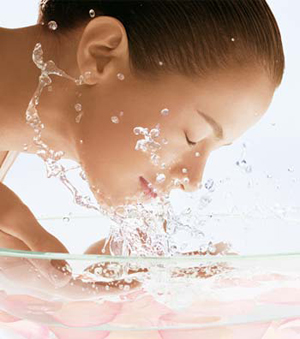Beauty Tips Skin Care in winter
Stay Beautiful
Welcome, Guest. Please login or register.
Aug
20
Beauty Tips Skin Care in winter
Skin Care in Winter
Changes in weather conditions in winters and summers can be hard on the skin. The dry and cold air in winter can drain essential moisture from the skin, making it look capped and dry. Follow these tips to maintain your skin healthy in winters.1. Use a humidifier. With the heat on and the windows closed, the air inside can become very dry in the winter, making the dryness and itching of eczema even worse. Use a humidifier to place moisture in the air. If you don’t want to invest in an expensive humidifying system, smaller, relatively inexpensive humidifiers can be obtained at a local drug store. Placing two or three of these around your home will help to humidify the dry air. This can keep skin from drying and becoming cracked and itchy.
Skin Care Tips in Winters
Use SPF sunscreen on face, neck and all visible parts of body when going out during winters.
Do not take excessive long and hot showers as this will deplete the natural skin moisturizer.
Keep your skin nourish by using good quality cleansing cream and mositurizer and wear warm clothes that does not create any iching sensation on the skin.
An ancient Chinese herbal remedy for detoxification during winter is drinking a glass of hot water with lemon. This cleanses the liver and gall bladder and the body cleans blood faster, thus toxins responsible for bad skin are eliminated.
Drink adequate water, say 12 glasses a day.
Take proper sleep.
The low humidity common in many parts of the United States during winter can cause dry, irritated skin. When skin becomes dry and irritated, eczema can flare. Here are some tips to help skin feel more comfortable during winter or anytime the air is dry:

2. Switch to an oil-based moisturizer and moisturize frequently. The more oil a moisturizer contains the more effectively it protects against moisture loss. Moisturizers that come in ointment form contain the most oil because an ointment, by definition, consists of 80% oil and 20% water. This water-in-oil emulsion forms a protective layer on the skin and makes it more “moisturizing” than creams and lotions. Ointments are especially beneficial when humidity is low. Ointments should not be used on areas of the body that tend to get hot and sweaty.
3. Before Going Outside in Winter:
Apply a heavy layer of moisturizing broad-spectrum sunscreen with an SPF of 15 or higher to the face, hands, and any other skin that may be exposed. This will act as a barrier to help protect against the harsh elements and is especially important if you will be outside for any length of time. Sunscreen is important in winter as the sun’s reflective powers are great year round - 17% on the sand and 80% on the snow. Today, several products are available that combine oily, moisturizing cream with sunscreen. If you are unsure of which product to use, ask a dermatologist. Grab those gloves. Protecting hands from the cold air and low humidity plays an important role in preventing flare-ups. Make sure the gloves are made from material that does not irritate your skin. Some patients find that wearing a cotton mitten next to the skin and a woolen mitten over the cotton one, keeps hands warm and dry.
4. Dress in layers. The most common triggers of the scratch/itch cycle are sweating and overheating. Wearing layers allows you to remove clothing as needed to prevent overheating. Be sure to wear loose-fitting cotton fabrics next to your skin.
5. Shed wet clothes and shoes immediately. These can irritate the skin and cause a flare-up.